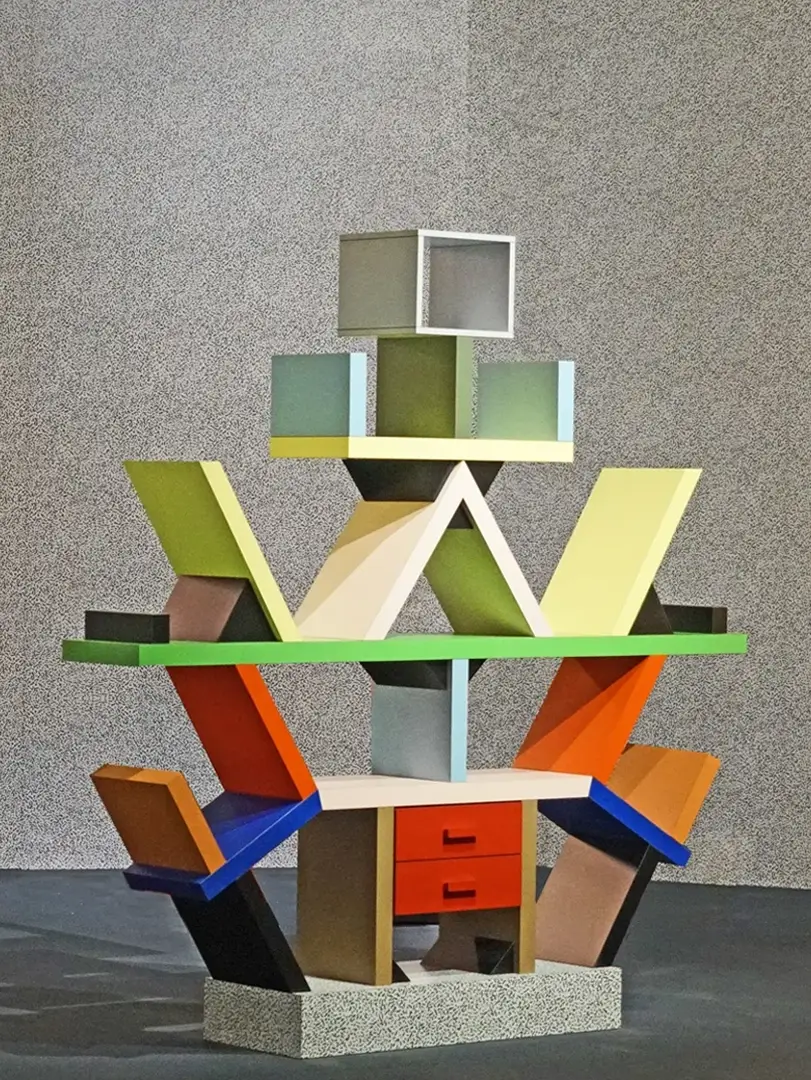The desire to overcome the precepts, and perhaps a certain coldness, of European modernism also finds fulfillment in the field of architecture with the concept of the 'escape house,' that is, a house where it is the freedom of behavior that informs architecture, and not vice versa. In the field of design, the signs of this 'escapism' are embodied in fabrics, glass lamps for Venini, and fire enamel objects made with Paolo De Poli.
Glass, for Sottsass, is a 'crazy' material, full of history. He explored it since the post-war period, for a Triennial, and continued until the Eighties. In these decades, it took on an almost organic complexity for him: Sottsass takes classic geometric shapes and shapes them, adds apparently random lines and asymmetries, combines glass with stone materials and metals, makes color the protagonist. Vases and objects are transformed into sculptures, or rather totems: entities that dialogue with the context, between past and future.








